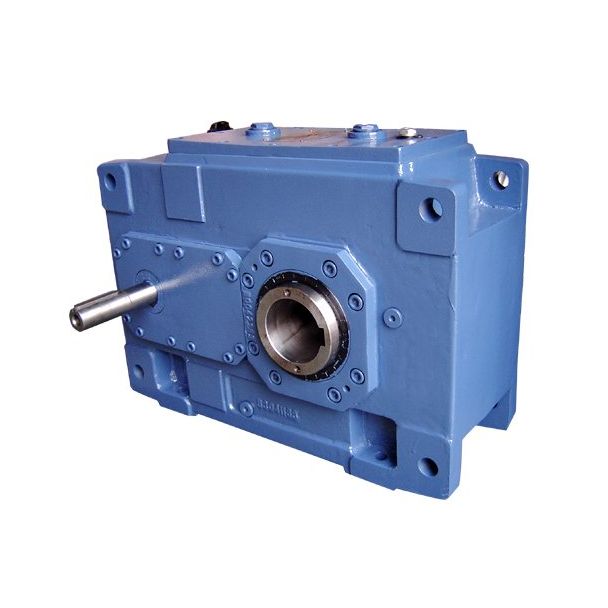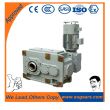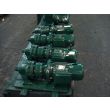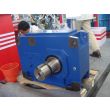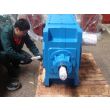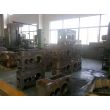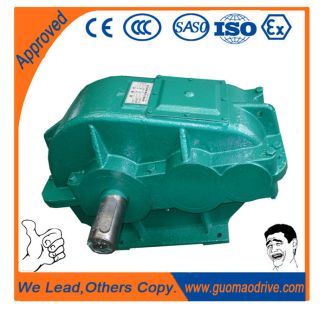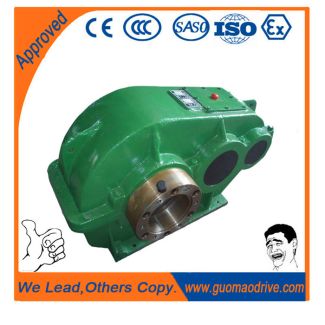admissibility in individual cases Flender GmbH B4-CH18-B Bevel-helical gear Reduction Boxes B4
In stock
SKU
B4-CH18-B
$111,428.57
Flender/Flender Gear Units/Bevel-helical gear Reduction Boxes B4
the position of their shafts, whether parallel or nonparallel, and, if nonparallel, whether inter- secting or nonintersecting. Spur Gears When spur gears are used, two gear wheels intermesh in the same plane, regulating the speed or force of motion and
spur gears are used, two gear wheels intermesh in the same plane, regulating the speed or force of motion and  reversing its direction. 8 Spur gears are generally the easiest to manufacture and the most commonly used, especially for drives
reversing its direction. 8 Spur gears are generally the easiest to manufacture and the most commonly used, especially for drives  with parallel shafts. They have straight teeth which are cut parallel to the axis of rotation.? Macaulay, The Way Things
with parallel shafts. They have straight teeth which are cut parallel to the axis of rotation.? Macaulay, The Way Things  Work, . 4. 7 Power Transmission Design Handbook 1 (Cleveland), . A3. The three main classes of spur gears-external tooth, internal, and rack and pinion -are shown in figure 1-1. External-tooth gears, as the name implies, have teeth cut on the outside edges of the wheels. This is the most common type of spur gear and it is typically used in pump and compressor assemblies and aircraft gear boxes. Internal gears have teeth cut on the inside surface of ring, and Figure 1-1 Spur gears one or more external-tooth spur gears are mounted inside. This type of gear is often used in small gear motors, wind turbines, and marine drives. With rack-and-pinion gears, one wheel, the pinion, meshes with sliding toothed rack, converting rotary motion to back-and-forth motion, or vice versa. These gears are most commonly found in vehicle steering mechanisms. External tooth gears Internal gears Rack-iand pinion gears 1-2 Source: Manufacturing Technology Research Needs of the Gear Industry, HT Research Institute, December 1. Helical Gears Helical gears are similar to spur gears and can be classified in the same three categories, external, internal, and rack and pinion. These gears differ from spur gears mainly in the shape of the teeth (see fig. 1-. Helical gear teeth are cut at an angle across the face of the gear, whereas spur gear teeth are cut parallel to the axis on which the gear rotates. The difference in the configuration of the teeth re
Work, . 4. 7 Power Transmission Design Handbook 1 (Cleveland), . A3. The three main classes of spur gears-external tooth, internal, and rack and pinion -are shown in figure 1-1. External-tooth gears, as the name implies, have teeth cut on the outside edges of the wheels. This is the most common type of spur gear and it is typically used in pump and compressor assemblies and aircraft gear boxes. Internal gears have teeth cut on the inside surface of ring, and Figure 1-1 Spur gears one or more external-tooth spur gears are mounted inside. This type of gear is often used in small gear motors, wind turbines, and marine drives. With rack-and-pinion gears, one wheel, the pinion, meshes with sliding toothed rack, converting rotary motion to back-and-forth motion, or vice versa. These gears are most commonly found in vehicle steering mechanisms. External tooth gears Internal gears Rack-iand pinion gears 1-2 Source: Manufacturing Technology Research Needs of the Gear Industry, HT Research Institute, December 1. Helical Gears Helical gears are similar to spur gears and can be classified in the same three categories, external, internal, and rack and pinion. These gears differ from spur gears mainly in the shape of the teeth (see fig. 1-. Helical gear teeth are cut at an angle across the face of the gear, whereas spur gear teeth are cut parallel to the axis on which the gear rotates. The difference in the configuration of the teeth re| Model Type | Bevel-helical gear Reduction Boxes B4 |
|---|---|
| Gear Type | Bevel Helical Gear |
| Weight (kg) | 5200.000000 |
| Ratio Range | 1 : 90…355 |
| Low Speed Output | Solid shaft without parallel key |
| Nominal Torque | 240000 Nm |
| Mounting Arrangements | Horizontal mounting position |
| Manufacturer | flanders electric peru s a c |
| Country of Manufacture | China |
| Data Sheet & Drawings | admissibility in individual cases Flender GmbH B4-CH18-B Bevel-helical gear Reduction Boxes B4 |
